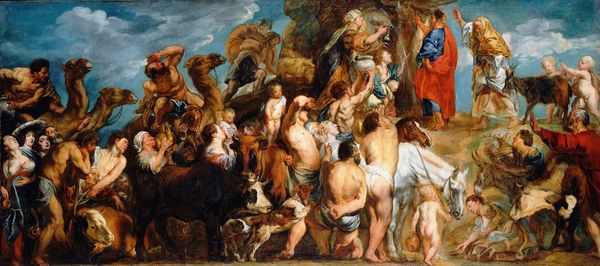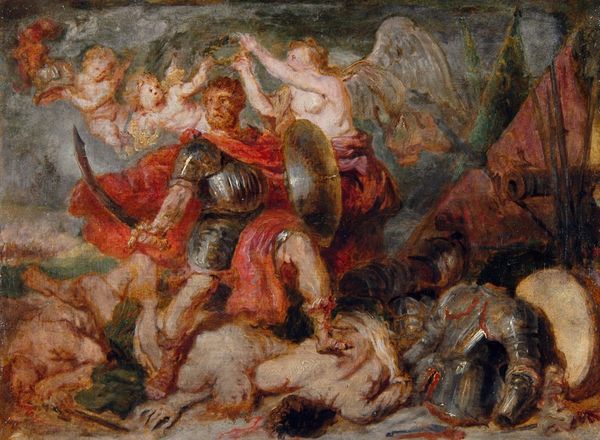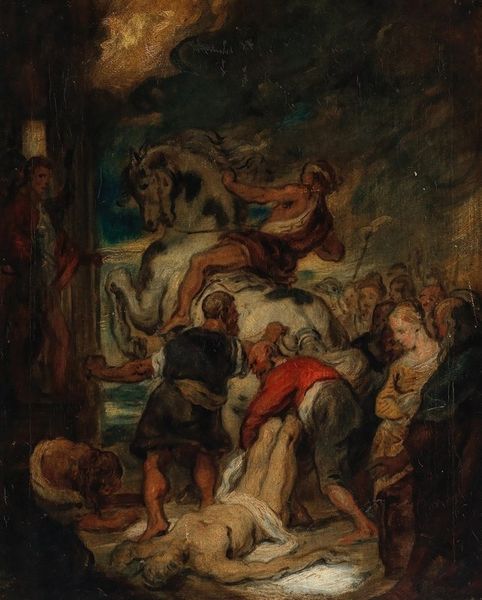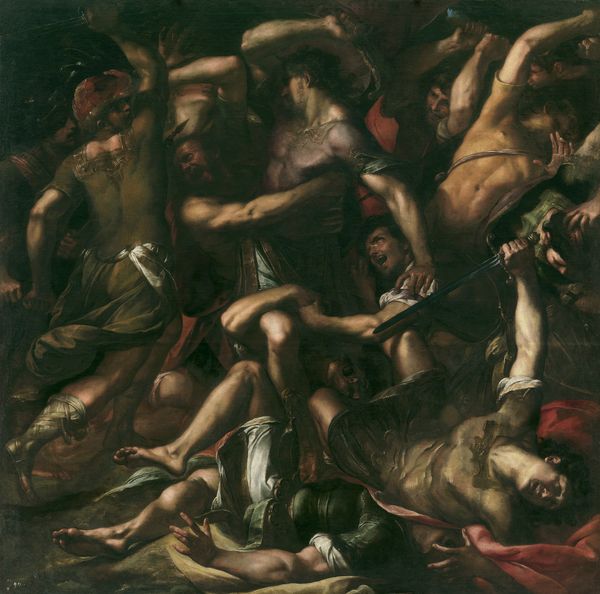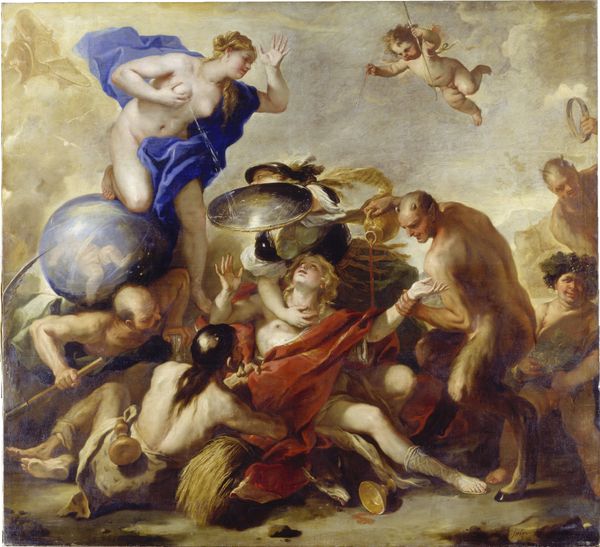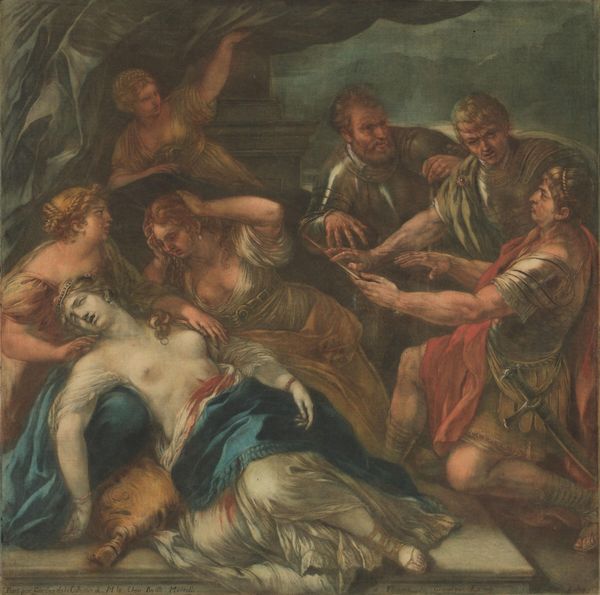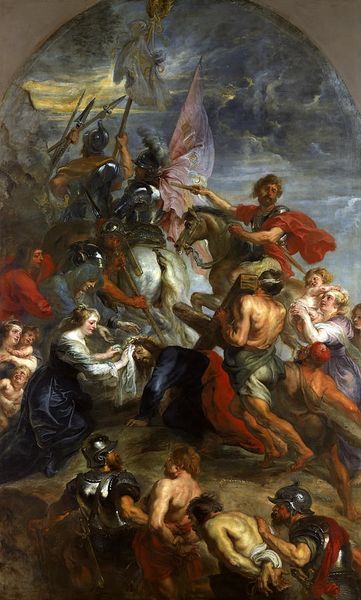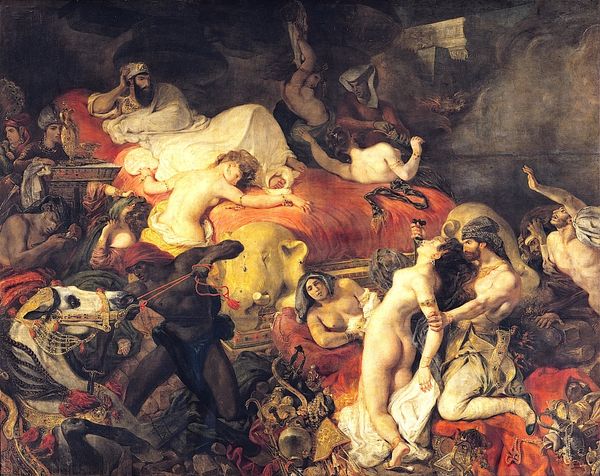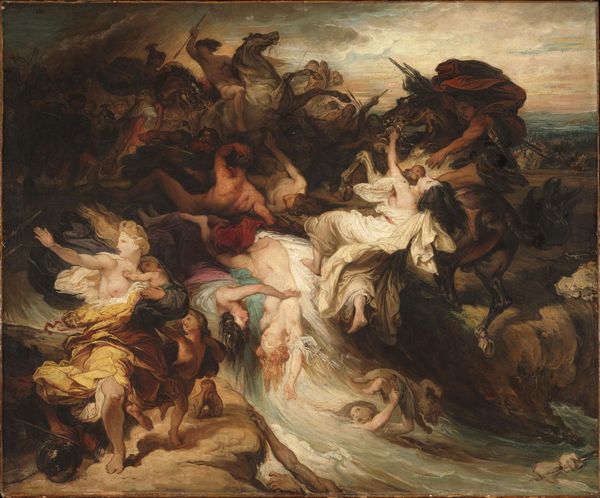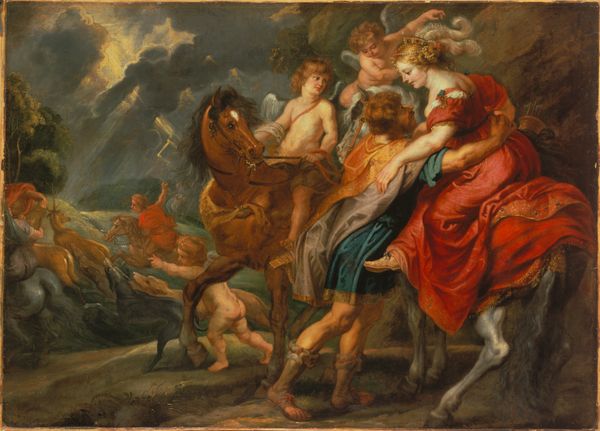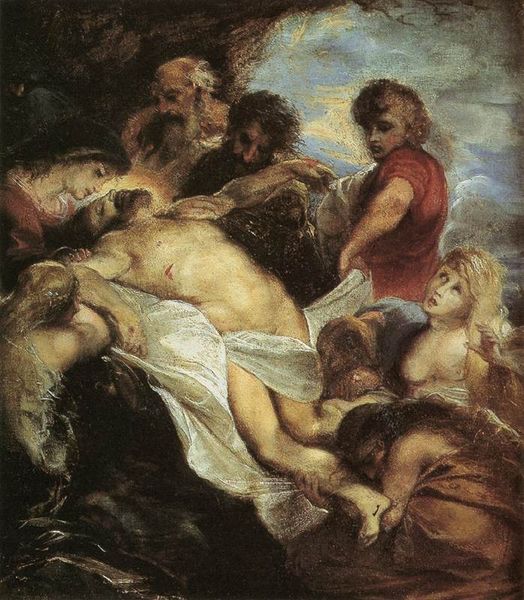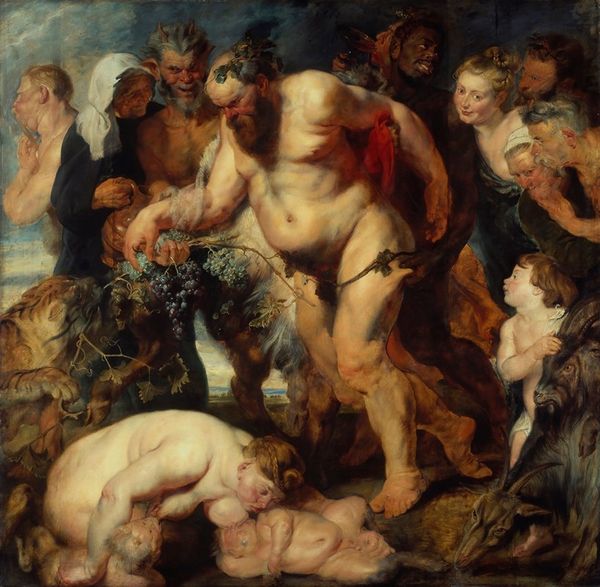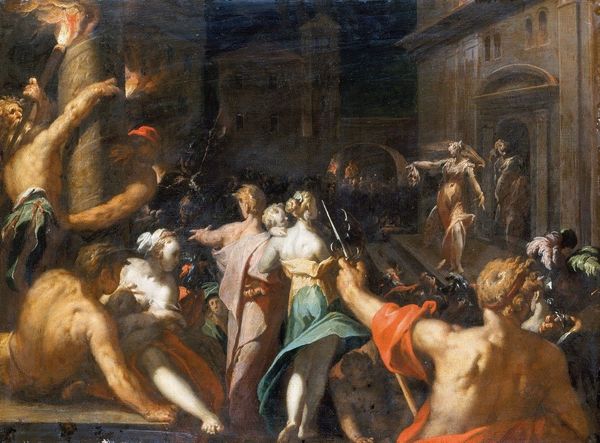
painting, oil-paint
#
baroque
#
painting
#
oil-paint
#
figuration
#
oil painting
#
history-painting
Dimensions: support height 73.9 cm, support width 56 cm, outer size depth 9.5 cm
Copyright: Rijks Museum: Open Domain
Editor: Here we have Peter Paul Rubens' "Christ on the Way to Calvary," painted around 1635, currently residing at the Rijksmuseum. It's an oil painting depicting, quite powerfully, Christ's journey to his crucifixion. It feels very dynamic, almost overwhelming with figures. What do you see in this piece, particularly considering the materials and the way it was made? Curator: It’s compelling to consider Rubens' process here, and its societal implications. Look at the scale, and consider the cost of pigments in the 17th century! This wasn't a small, private devotional piece. Rubens’ workshop undoubtedly played a huge part; assistants grinding pigments, preparing the canvas, even blocking in sections. Who were these people? How were they compensated? Their labor is intrinsically linked to the final product we see. Editor: That's fascinating! I hadn't really considered the workshop aspect in such detail. So, the cost and labor involved reflect the commissioner's wealth and status too? Curator: Precisely! Think about the specific choices in pigment: were expensive blues, derived from Lapis Lazuli used prominently? That alone tells us something about patronage and what they aimed to project. Beyond religious devotion, what about displaying their affluence through artistic production and their ability to afford costly art materials and techniques? How does the art market of the time play into Rubens' choices? Editor: It really changes my understanding when you frame it in terms of production and consumption like that, rather than just aesthetic beauty. I never thought so much about the political economy when regarding "religious" work! Curator: Exactly! Considering materiality, labor, and social context shifts our focus beyond simply "who" is depicted and towards "how" and "why" the artwork came into being. Editor: Thank you for highlighting that. I will definitely see it from a materialist lens. Curator: A materialist view really deepens our understanding of the artwork beyond just aesthetic appreciation.
Comments
No comments
Be the first to comment and join the conversation on the ultimate creative platform.
